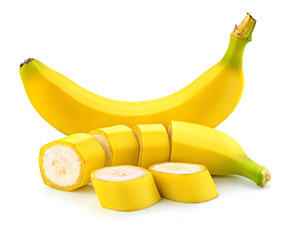
Why does food have the ability to alter our mood, and how does what we eat relate to our feelings?
Food is a very powerful tool and has a major impact on how we feel. If we do not have the nutrition that our bodily system needs, we will certainly feel the negative impact on our emotions. Eating high GI foods can give us an energy rush, which leaves us with low blood sugar, and a burnt out, lethargic feeling. While low levels of Vitamins from the B-family have been associated with negative mood swings.
One neurotransmitter that is often associated with feeling happy and content is serotonin. Serotonin satiates us after we have eaten a meal – it also contributes to the feeling of being in love. You can top up your serotonin levels by eating bananas, kiwi fruit and pineapples.
What are good fats (and bad ones) and what role do they play in our disposition?
Bad fats, or saturated fats, are obtained from processed food and do not occur in nature. These fats have a tendency to accumulate in the cardiovascular system, where they may clog blood vessels, leading to heart attacks and strokes. They also cause damage to your cell membranes and consequently your nervous system. So next time you reach for a doughnut, remember that the saturated fats in it won’t just end up on your hips, but in your brain too!
"Next time you reach for a doughnut, remember that the saturated fats in it won't just end up on your hips, but in your brain too!"
Eating as an action, in itself gives us pleasure. Our brains are wired to flood our nervous system with dopamine when we eat certain foods, which make us happy.
The reason why we opt for fatty and sugary foods is actually evolutionary. The original intent of this mechanism was to ensure the survival of the human race in a time where food was very scarce. By connecting high calorie foods with the reward of pleasure, nature ensured that in times of starvation, we would not opt for the low calorie foods but ones with the highest caloric value.
The problem is that today we find these salts, fats and sugars in food that is particularly bad for us.
The term coined “hangry” refers to when someone is angry because they are hungry – is this a real thing? Why does it happen?
Hunger is very basic; it’s our body signalling that we need food. But scientifically speaking there is no such thing as “hangry”.
We are creatures of habit that tend to have fixed patterns of how and when we like to eat. We are used to feeling satisfied at certain times of the day and feel unbalanced – or “hangry” - when we don’t follow our usual eating patterns.
Why does processed food leave one feeling tired and sluggish?
Processed foods tend to be high in calories in the shape of saturated fats and sugar. And refined sugars often have a very high glycaemic index (GI). High GI foods can stimulate an energy rush, which after a short experience of euphoria leaves us with the crash of low blood sugar. This is the feeling of sluggishness.
What is a healthy – and happy – alternative to eat instead of processed snacks?
The answer has to be bananas – they’re the ultimate happy food. They’re balanced in complex carbohydrates and protein and contain various vitamins and minerals.
What does a “happy” diet look like?
A happy diet is balanced in protein, complex carbohydrates, good fats and micronutrients. Getting as much unprocessed or lightly cooked fresh and organic fruit and vegetable is key for the happy-dieter.




